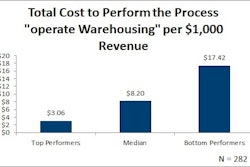
Decades back, diversity and inclusion were largely seen as social initiatives mandated through the federal government and embraced by only a handful of blue-chip companies. Fast forward to today—it’s now a competitive advantage that smart companies can’t afford to ignore. One of the biggest reasons for this is simply demographic trends. The United States is on the fast track to becoming a “majority minority” nation. According to U.S. Census projections, the tipping point will come in 2044, when more than half of the U.S. population will be composed of Hispanics, African-Americans and Asians.
These multicultural Americans are flexing an increasingly powerful economic muscle. The 2015 report from the University of Georgia’s Selig Center for Economic Growth underscores that these consumers are the current and future drivers of U.S. consumer spending growth.
Beyond demographics, social attitudes are also changing. Across the country, people are becoming more tolerant and accepting of those with different lifestyles, traditions and backgrounds. At the same time, the Internet is bringing greater scrutiny of corporate practices and ethics around the globe. More than ever, companies are being held to higher standards of inclusion and corporate citizenship.
If companies want to remain relevant in coming years, they clearly need to adapt to these trends. They must be inclusive and reflect society’s evolution across their organizations—from the C-suite to the board room down to their procurement practices. In the procurement arena, the majority of diverse suppliers are entrepreneur-driven businesses. It’s well known that small business (99.7 percent of U.S. employer firms) long formed the backbone of the nation’s economy. These businesses have a lot to offer.
Functioning with fewer layers of bureaucracy, they move nimbly and efficiently. They are often more willing to adapt to clients’ needs and change their businesses accordingly, as compared to larger companies.
Recognizing that having a diverse supplier strategy is a path to growth and profits, many Fortune 500 companies offer mentorships, training and other initiatives to help these smaller companies grow. It’s an insightful move because the return on this investment is the forging of strong ties between vendor and client. Companies know that successful supply chain management pivots on reliable long-term relationships. It’s more than a simple buy-and-sell transaction.
However, this emerging trend toward diversity is still evolving. As a first step, companies can easily locate world-class diverse suppliers of all types of products and services through organizations such as the National Minority Supplier Development Council (NMSDC) and the Women's Business Enterprise National Council (WBENC).
In today’s ultra-competitive global business climate, Fortune 500 companies need all the competitive edge they can muster to succeed. Taking the strategic step to embrace diversity and inclusion not only makes good business sense, but also further propels companies into becoming leaders at the forefront of the seismic multicultural shift happening in America today.













